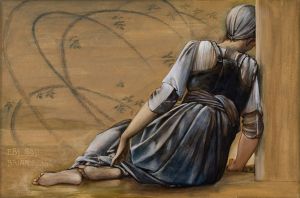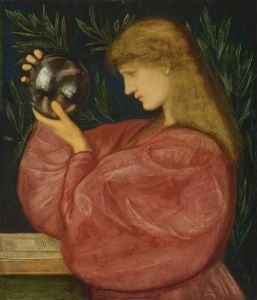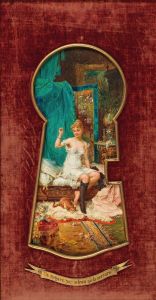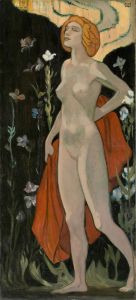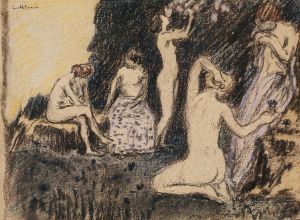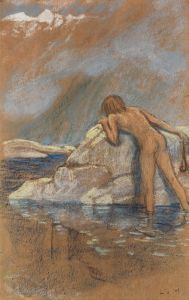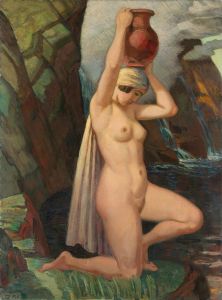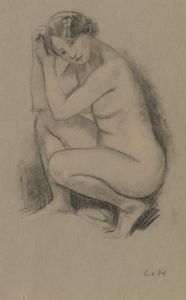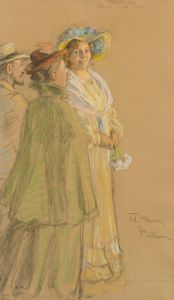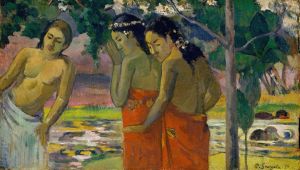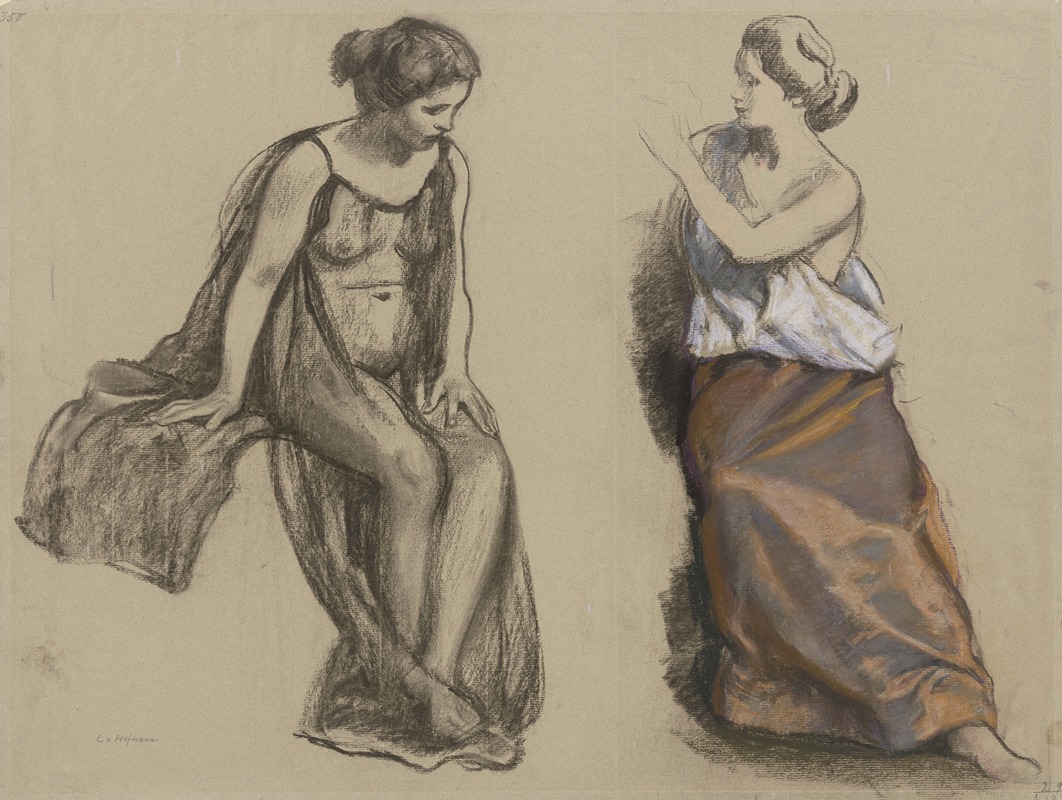
Studienblatt; Zwei Frauen, sitzend, in unterschiedlicher Bekleidung
A hand-painted replica of Ludwig von Hofmann’s masterpiece Studienblatt; Zwei Frauen, sitzend, in unterschiedlicher Bekleidung, meticulously crafted by professional artists to capture the true essence of the original. Each piece is created with museum-quality canvas and rare mineral pigments, carefully painted by experienced artists with delicate brushstrokes and rich, layered colors to perfectly recreate the texture of the original artwork. Unlike machine-printed reproductions, this hand-painted version brings the painting to life, infused with the artist’s emotions and skill in every stroke. Whether for personal collection or home decoration, it instantly elevates the artistic atmosphere of any space.
Ludwig von Hofmann was a prominent German painter and graphic artist associated with the Jugendstil movement, which is the German counterpart to Art Nouveau. His works often explore themes of beauty, nature, and the human form, reflecting the aesthetic ideals of his time. One of his notable works is "Studienblatt; Zwei Frauen, sitzend, in unterschiedlicher Bekleidung," which translates to "Study Sheet; Two Women, Seated, in Different Clothing."
This artwork is a study piece, which suggests that it was likely created as part of Hofmann's process in exploring form, composition, and the interplay of figures within a space. The title itself indicates that the focus is on two women who are depicted in varying attire, which might suggest an exploration of contrast or diversity in fashion, social status, or cultural identity. Such studies were common among artists of the period as they honed their skills in capturing the human figure and experimenting with different artistic techniques.
Hofmann's work is characterized by its graceful lines and harmonious compositions, often imbued with a sense of tranquility and idealism. In "Studienblatt; Zwei Frauen, sitzend, in unterschiedlicher Bekleidung," these elements are likely present, as the artist would have been interested in capturing the elegance and poise of the figures, as well as the textures and patterns of their clothing. The study format allows for a focus on these details without the need for a fully realized background or narrative context.
The Jugendstil movement, to which Hofmann belonged, was known for its emphasis on organic forms and the integration of art into everyday life. Artists within this movement sought to break away from the academic traditions of the 19th century, embracing instead a more fluid and decorative approach. Hofmann's studies, including this one, would have contributed to his larger body of work that often depicted idyllic scenes of leisure and nature, populated by figures that embody an idealized beauty.
Ludwig von Hofmann's influence extended beyond his paintings; he was also a respected teacher and served as a professor at the Weimar Saxon-Grand Ducal Art School and later at the Academy of Fine Arts in Dresden. His teachings and works inspired a generation of artists who followed in his footsteps, contributing to the development of modern art in Germany.
While specific details about "Studienblatt; Zwei Frauen, sitzend, in unterschiedlicher Bekleidung" may be limited, the piece fits within the broader context of Hofmann's oeuvre and the artistic movements of his time. His studies remain valuable for understanding the techniques and thematic preoccupations of early 20th-century German art, as well as the ways in which artists like Hofmann navigated the transition from traditional to modern artistic expressions.





